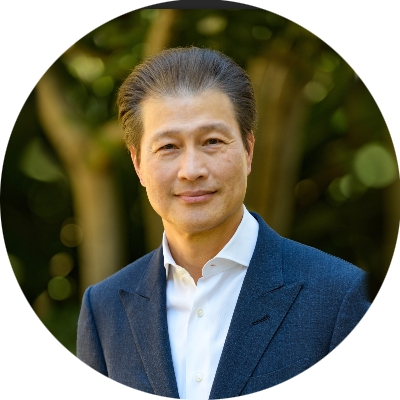

Connecting communities and amplifying their diverse voices lies at the core of East West Bank’s DNA. We believe in the power of art to build bridges, transcend borders, inspire future generations, celebrate underrepresented voices, and nurture greater cultural understanding and appreciation.
Since the early 2000’s, East West Bank has supported esteemed cultural institutions in bringing world-class contemporary Asian art to U.S. audiences. The Los Angeles County Museum of Art has been a close collaborator on that journey.
Dominic Ng: How can art make an impact, and what is LACMA’s role in that?
Michael Govan: Public museums like LACMA offer a place where everyone can experience culture and creativity across all regions and all mediums. At LACMA, we strive to do that in ways that resonate with the incredibly diverse populations of Los Angeles and Southern California. The power of art lies in its accessibility to all. Art is in everyone’s life in some way, and our shared desire for creativity and search for knowledge and meaning compel us to celebrate what connects us. That civic role is at the heart of the museum’s work, right alongside the curation and conservation of our collection.

Xu Bing's First Class, (2011), © Xu Bing, photo © Museum Associates/LACMA
Dominic Ng: What is your perspective on how art can connect people?
Michael Govan: Art can serve as a bridge between different cultures and ideas by introducing people to new insights and points of view, and encouraging them to discover new connections. There’s so much we can learn from each other, and LACMA is a space where art can help tear down walls and facilitate the pursuit of knowledge across all cultures.
Dominic Ng: East West Bank sponsored LACMA’s “The Allure of Matter: Material Art from China” in 2019. What is LACMA’s vision for showcasing East Asian art?
Michael Govan: East Asian art—particularly East Asian contemporary art—has been an important focus of the museum’s collection and exhibitions since its earliest days. Over the last decade LACMA has been building relationships with partners in Asia while deepening our commitment to the study, interpretation and display of the diaspora of East Asian art. Our vision is to showcase a broad range of creative voices—especially the too-often underrepresented voices of contemporary East Asian artists—and contribute to the ongoing cultural exchange between the East and West.
Dominic Ng: What compelling qualities do you see in contemporary East Asian art?
Michael Govan: One of the most striking aspects of contemporary East Asian art, which we explored in The Allure of Matter, is how a new generation of artists is incorporating their physical environment and the everyday materials around them into their artwork and using them as powerful methods of expression and experimentation. One memorable example from that exhibition is Liang Shaoji’s “Chains: The Unbearable Lightness of Being, Nature Series”, in which the artist covered chains in fine white threads spun like cotton candy to symbolize how the story of silk and China are intertwined. Other contemporary East Asian artists frequently integrate common objects like nails, cigarettes, human hair, and roof tiles, using them both within a sociopolitical framework and as a means of communicating very personal hopes, dreams, and blessings.

LACMA purchased Zeng Fanzhi’s Untitled with funds provided by East West Bank Chairman and CEO Dominic Ng
Dominic Ng: Both of our organizations also share a commitment to diversity. How does that manifest itself at LACMA?
Michael Govan: We take LACMA’s role in Los Angeles—a space for visitors to encounter different viewpoints and stories—very seriously. To do that, we are committed to expanding diversity at every level—from the diversity of the art and artists we feature to that of our staff and board—to make sure we are constantly evolving and responding thoughtfully to this pluralistic world we all occupy. This belief is also a guiding post in how we’ve designed our new permanent collection building that is currently under construction. In the new building, where all art is placed on the same plane and perceived hierarchies among cultures are dissolved, visitors will be able to explore diverse art histories from many points of view, taking paths of their own choosing. This is how I think that spaces like LACMA can continue to be central to civic life.


